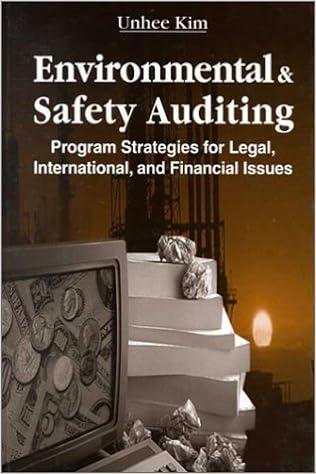Question
641. Adapted AICPA Simulation Note: This simulation integrates concepts first presented in Chapter 5 (see Figure 5.1 for Assertions about Account Balances) and information from
641.
Adapted AICPA Simulation
Note: This simulation integrates concepts first presented in Chapter 5 (see Figure 5.1 for Assertions about Account Balances) and information from throughout the procedural chapters (10 through 16) rather than only Chapter 16 coverage. This problem uses only the four account balances assertions from Figure 5.1: it does not include the cutoff assertion. Accordingly, procedures which might be considered cutoff procedures would generally be considered as addressing either or both of the existence or completeness assertions (see footnote 1 on page 144).
For each of the account balances and associated assertions below, select the audit procedure from the list provided that provides the most appropriate audit evidence for the account assertion.
| Account Balances | Assertion | Procedure |
|---|---|---|
| 1. Accounts Receivable | Completeness | Review confirmation of accounts receivable balances and agree to accounts receivable subledger. Review list of accounts written off during year. Review schedule of bad debt expense. Trace individual customer account transactions to sales invoice. Trace sales invoice and shipping documents just before year-end to customer account transactions. |
| 2. Inventory | Valuation and Allocation | Examine invoices from suppliers. Examine invoices paid subsequent to year-end and trace to subsidiary ledger. Select items from inventory listing and locate the items in the warehouse. Select items located in the inventory warehouse and trace to inventory listing. Trace sales invoices and shipping documents just before year-end to customer accounts. |
| 3. Fixed Assets | Rights and Obligations | Interview plant manager regarding fixed asset additions during the year. Recalculate partial year depreciation for fixed asset acquisitions. Trace fixed asset item to fixed asset master control listing. Vouch fixed asset acquisitions to purchase invoices. Vouch fixed asset acquisitions to related cash disbursement. |
| 4. Accounts Payable | Completeness | Compare aging of accounts payable to prior periods. Confirm accounts payable balance with suppliers. Examine invoices paid subsequent to year-end and trace to subsidiary ledger. Trace individual payable transaction to purchase order. Vouch invoices for the purchase of supplies to receiving documents. |
| 5. Cash | Existence | Agree bank statement to the subsidiary ledger. Agree cash balance per the bank reconciliation to the year-end bank statement. Agree cash balance to online year-end bank statement. Recalculate bank statement balance including interest receivable. Trace deposit per the bank statement to the cash subsidiary ledger. |
Page 666
Problems
Step by Step Solution
There are 3 Steps involved in it
Step: 1

Get Instant Access to Expert-Tailored Solutions
See step-by-step solutions with expert insights and AI powered tools for academic success
Step: 2

Step: 3

Ace Your Homework with AI
Get the answers you need in no time with our AI-driven, step-by-step assistance
Get Started


